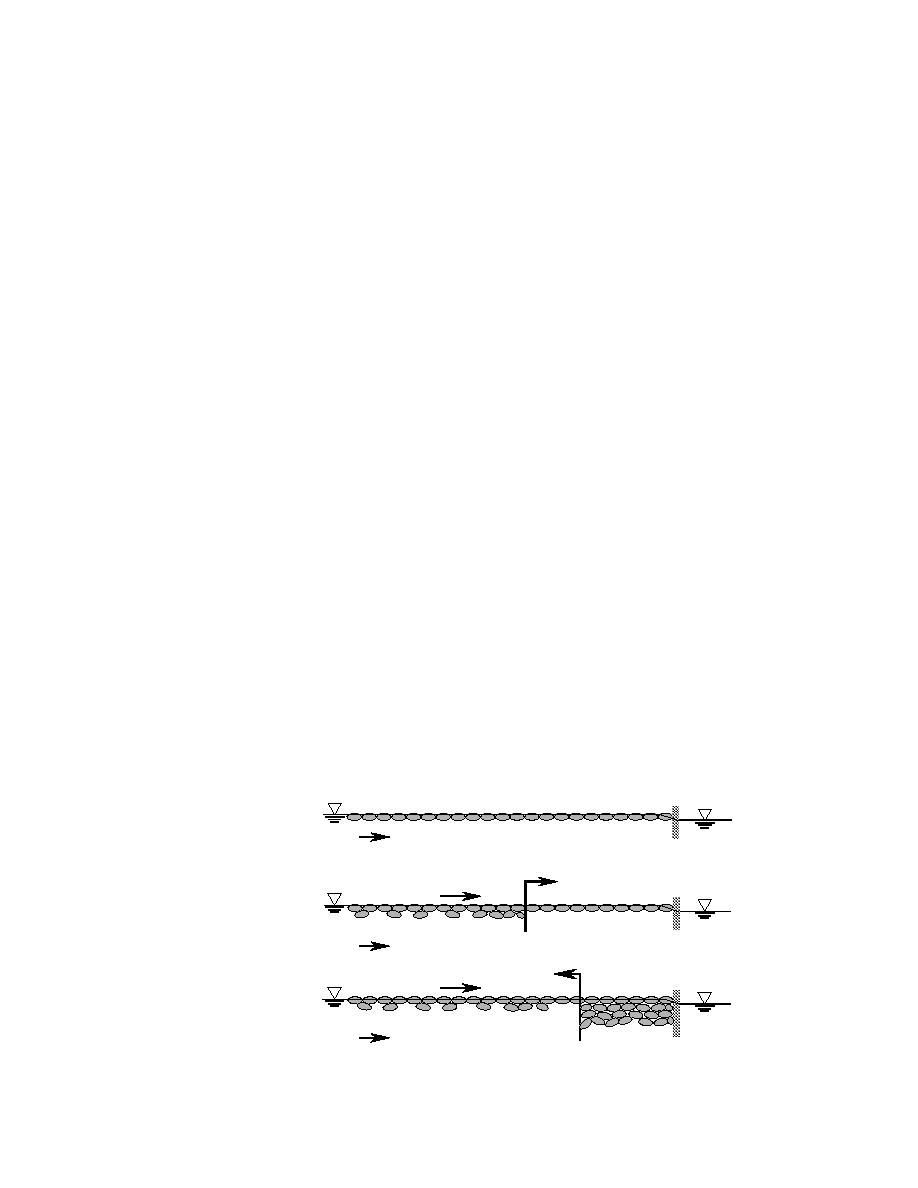
thickness, following shoving and thickening, to be compared with that predicted
by equilibrium thickness theory.
Observations of shoving and thickening
The jams failed in two general ways with both the real ice and plastic beads
simulating ice. The type of failure was related to the initial flow rate, jam thickness,
and the relative increase in flow rate over the initial value.
The first mode of jam failure is called here "progressive jam failure." It was the
dominant mode for low initial water discharge, relative to the discharge needed to
fail the entire cover, and when the relative increase in discharge was less than 50%.
As the discharge was increased, the water level rose first at the upstream end of the
flume as the discharge wave traveled its length. The consequent increase in shear
stress on the underside of the cover caused minor consolidation at the upstream
end of the accumulation and some underturning and transport of individual pieces.
Small ridges of local thickening formed near the jam's upstream end. The ridges
developed rather slowly, with the jam upstream moving into the ridge, while the
portion of the jam downstream remained motionless. The increased thickness and
roughness of the ridge further increased shear stress on the jam's underside in the
vicinity of the ridge, initiating additional small failures and ridge-building events
further downstream. When new ridges formed downstream, the activity at the
upstream ridges slowed or ceased and the entire jam above the most downstream
ridge began moving.
With time, this progression of ridge-forming, herein termed the "shoving front,"
advanced to the jam's downstream end at the screen. At that point, the entire jam
was in motion. The jam thickness subsequently increased at the screen until the
thickening jam's strength could resist the downstream-acting forces. Although ridge-
building resulted in minor local thickening as it progressed downstream, the major
thickening occurred at the screen, then progressed back upstream. As thickening
progressed upstream, the portion of the jam downstream of the "thickening front"
became stationary.
Meanwhile, the jam upstream was still moving. Figure 17 provides an idealized
picture of the movements of the shoving front and the thickening front during the
progressive failure of a jam. Ice velocities during jam failure and thickening were
very much less than the bulk water velocity.
Screen
Ice Cover Stationary
Before Increase in Q
Q
Single Layer Thickness
Shoving Front
Ice Cover Stationary Screen
Ice Cover Moving
After Increase in Q,
Shoving Front Progression
Single Layer
Some Multilayering
Q
Stopping Front
Ice Cover
Screen
Ice Cover Moving
Stationary
After Increase in Q,
Stopping Front Progression
Some Multilayering
Q
Multilayered
Cover
Figure 17. Progressive jam failure.
23



 Previous Page
Previous Page
